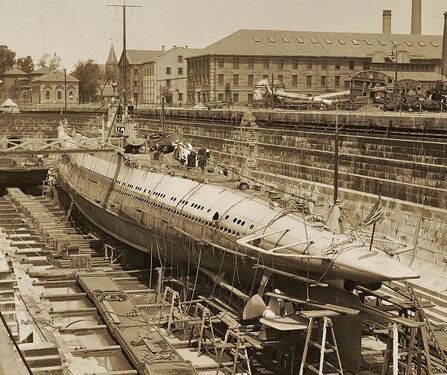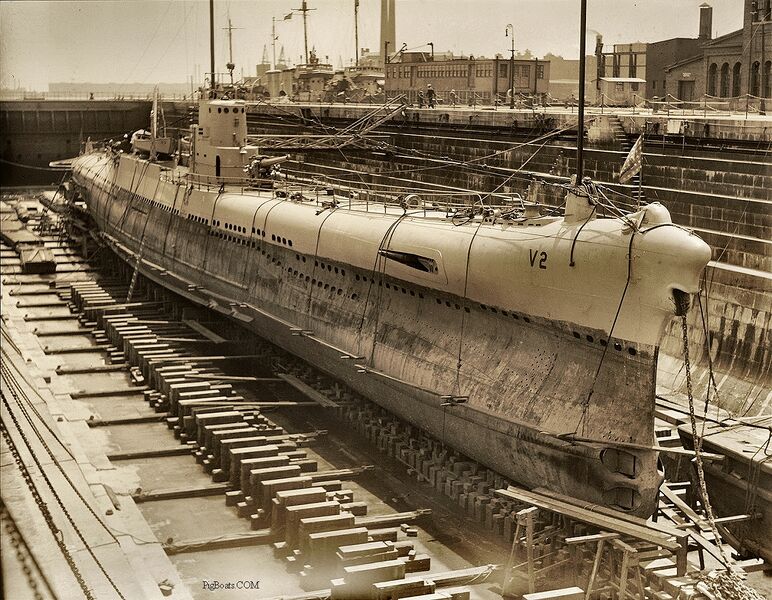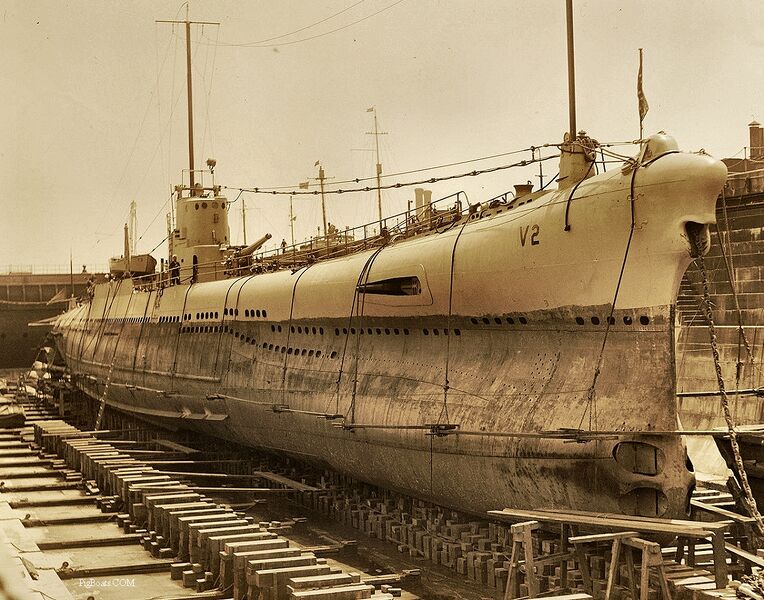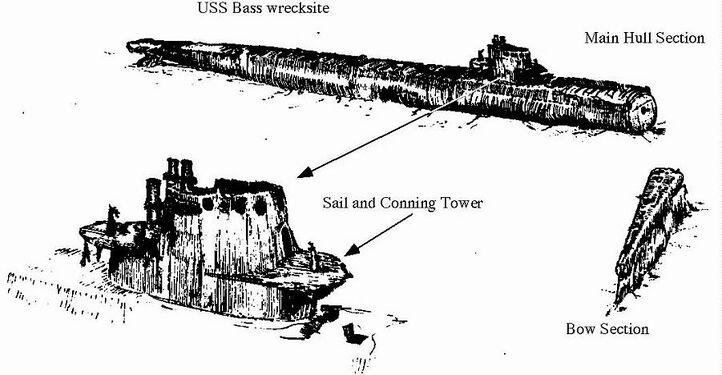V-2: Difference between revisions
Pbcjohnston (talk | contribs) Added more photos |
Pbcjohnston (talk | contribs) Finished Bass photos |
||
| Line 2: | Line 2: | ||
[[File:Bass boston 1927-8.jpg|left|500px]] | [[File:Bass boston 1927-8.jpg|left|500px]] | ||
<div style="text-align: justify;"><span style="color:#00008B">V-2 in drydock at the Boston Navy Yard, Charlestown, MA., probably in the late summer of 1927. The V-2 and her sisters V-1 and V-3 were preparing for a long trip, they were being transferred to the Pacific coast in November 1927 along with Submarine Division 20. In this photo she is firmly down on the keel blocks and she is braced to the dock sidewall. Divers have been in the water to ensure that the boat is resting | <div style="text-align: justify;"><span style="color:#00008B">V-2 in drydock at the Boston Navy Yard, Charlestown, MA., probably in the late summer of 1927. The V-2 and her sisters V-1 and V-3 were preparing for a long trip, they were being transferred to the Pacific coast in November 1927 along with Submarine Division 20. In this photo she is firmly down on the keel blocks and she is braced to the dock sidewall. Divers have been in the water to ensure that the boat is resting squarely on the blocks and that none have shifted. The men on the floating platforms are performing a similar function. Emptying the dock is a tricky process and has to be carefully done over several hours to ensure safety. | ||
<small>Photo courtesy of the Boston Public Library, Leslie Jones Collection. Used with permission.</small> | <small>Photo courtesy of the Boston Public Library, Leslie Jones Collection. Used with permission.</small> | ||
| Line 81: | Line 81: | ||
[[File:Red bar sub new.jpg]] | [[File:Red bar sub new.jpg]] | ||
[[File:Bass stbd black.jpeg|left|500px]] | |||
<div style="text-align: justify;"><span style="color:#00008B">On February 19, 1931 V-2 was renamed Bass and was redesignated SS-164 a few months later. In 1935 as part of a force wide change she was repainted in a flat black paint scheme. During this time she was seen with the class identifier B2 on her fairwater. Bass is seen here in the 1935 to 1939 time frame, location unknown. Her original 5"/51 caliber deck gun has been replaced with a smaller and lighter 3"/50 caliber weapon in an attempt to partially correct a high center of gravity and overweight condition that had adversely affected stability. On the far left a large escape trunk has been installed, replacing the aft torpedo room loading and access hatch. She may be entering port, as both of her small boats have been hauled out and are sitting on deck. | |||
<small>Original photo in the private collection of Ric Hedman</small> | |||
[[File:Red bar sub new.jpg]] | |||
[[File:Bass stbd black 2.jpg|left|500px]] | |||
<div style="text-align: justify;"><span style="color:#00008B">Bass is seen entering port somewhere along the U.S. west coast between 1934 and 1936. The exact location is somewhat in doubt, but it could be San Diego, San Pedro/Long Beach, or the San Pablo Bay area north of San Francisco. During the time frame for this photo she was assigned to Submarine Division 12 out of San Diego, and she cruised along most of the west coast, into the Canal Zone and in the Hawaiian Islands until January 1937, when she departed the west coast for Philadelphia. There she went out of commission and into reserve on June 9, 1937. | |||
Bass and her sisters were pressed back into service in the fall of 1940 in an effort to plus up the Submarine Force as war loomed. On August 17, 1942 a fire broke out while Bass was at sea. The electrical fire started in the after battery compartment and spread to the motor room and aft torpedo room. Tragically, 25 men died in the fire, nearly 50% of her crew. The Bass was escorted to a port of shelter in Costa Rica, where emergency repairs were made before departing for Balboa in the Canal Zone and eventually a yard period in Philadelphia. Bass continued to serve in a limited capacity until March 3, 1945 when she was decommissioned for the last time. | |||
This photo gives a good view of the 3"/50 caliber Mk 17 gun that replaced her original 5"/51 caliber weapon. | |||
<small>Original photo in the private collection of Ric Hedman</small> | |||
[[File:Red bar sub new.jpg]] | |||
<center> | |||
<gallery mode="packed" widths="350px" heights="250px"> | |||
File:Bass bottom 1.jpg | |||
File:Bass bottom 2.jpg | |||
</gallery> | |||
</center> | |||
<div style="text-align: justify;"><span style="color:#00008B">Just nine days after her decommissioning, Bass was expended as a target in a Mk 24 mine test. These two artist drawings depict her wreckage on the bottom of the Atlantic off Block Island. | |||
<small>Drawings in the private collection of Ric Hedman</small> | |||
[[File:Red bar sub new.jpg]] | |||
[[File:Bass map.jpg|left|500px]] | |||
<div style="text-align: justify;"><span style="color:#00008B">Bass's wreck site off Block Island, NY. | |||
<small>Screen capture by Ric Hedman</small> | |||
[[File:Red bar sub new.jpg]] | |||
<center>[[V-1 Class|Return to the V-1 Class Page]] | [[V-class|Return to the V-class page]]</center> | <center>[[V-1 Class|Return to the V-1 Class Page]] | [[V-class|Return to the V-class page]]</center> | ||
[[File:Red bar sub new.jpg]] | [[File:Red bar sub new.jpg]] | ||
Revision as of 16:50, 3 July 2023
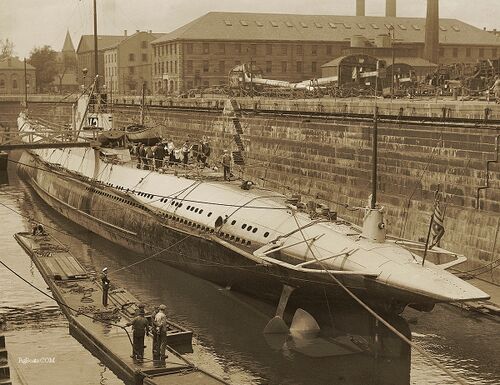
Photo courtesy of the Boston Public Library, Leslie Jones Collection. Used with permission.
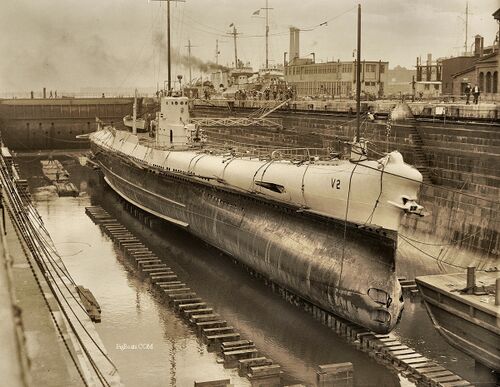
Photo courtesy of the Boston Public Library, Leslie Jones Collection. Used with permission.
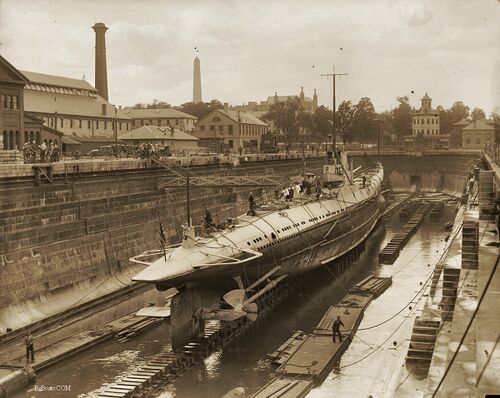
Photo courtesy of the Boston Public Library, Leslie Jones Collection. Used with permission.
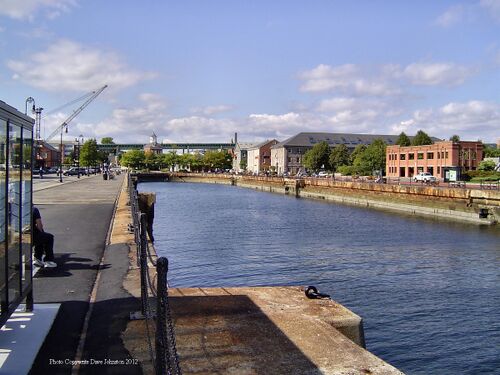
Photo by David Johnston
Also very prominent in these photos are the V-2's small boats, used as liberty launches when the boat was anchored out. These boats were housed in deck fairings aft of the conning tower fairwater and were covered over with teak deck slats. To launch the boats the decking above them would be removed and the boats hoisted out of the fairings using a large kingpost/boom crane, each located just forward of the fairings.
In the first and second photos the undulating sheer of her main deck can be clearly seen.
Photo courtesy of the Boston Public Library, Leslie Jones Collection. Used with permission.
The holes along the side of the boat are "limber holes", used to flood the free flooding superstructure when the boat dives, and drain it upon surfacing. The large slit in the bow houses the retracted starboard side bow diving plane.
Photo courtesy of the Boston Public Library, Leslie Jones Collection. Used with permission.
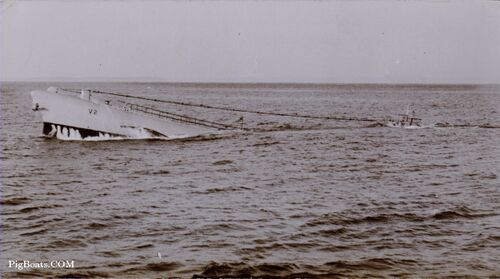
There is nothing else in the photo because it had been physically cropped by the newspaper service that had used the photo. It had much paint and ink on it that had to be removed by webmaster Ric Hedman in order to display the original image as seen here.
Original photo in the private collection of Ric Hedman
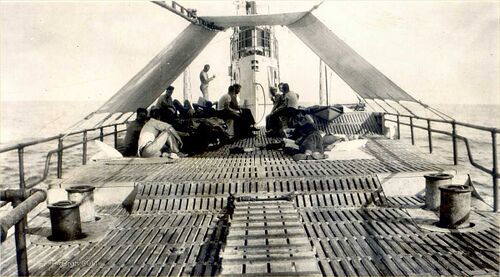
Some of the crew have brought up blankets and pillows to lay on the deck to relax upon. Interesting to note that the bow of the starboard launch is protruding through the decking over the small boat storage locker. The kingposts for launching and retrieving these boats are see at the outer edges of the awning. There is a portable shower rigged on the very back edge of the conning tower fairwater. The hose leading to it can be seen arcing to the right and toward the left.
The bitts seen on either side of the deck in the foreground appear to be retracting. The assumption is based on the fact that each has a handle built into the recessed top of each bitt. It is assumed that turning this handle would unlock or unscrew the bitt from a locked position and allow it to be lowered into the deck. This seems strange to be a strangely contrived attempt at streamlining on a boat with so many other sources of drag topside.
Original photo in the private collection of Ric Hedman
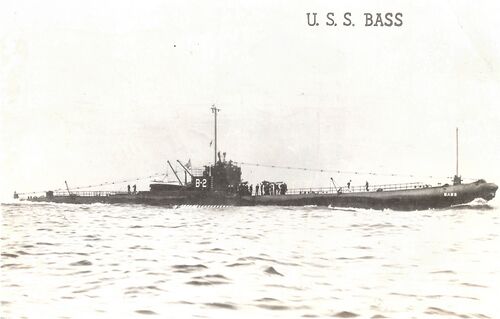
Original photo in the private collection of Ric Hedman

Bass and her sisters were pressed back into service in the fall of 1940 in an effort to plus up the Submarine Force as war loomed. On August 17, 1942 a fire broke out while Bass was at sea. The electrical fire started in the after battery compartment and spread to the motor room and aft torpedo room. Tragically, 25 men died in the fire, nearly 50% of her crew. The Bass was escorted to a port of shelter in Costa Rica, where emergency repairs were made before departing for Balboa in the Canal Zone and eventually a yard period in Philadelphia. Bass continued to serve in a limited capacity until March 3, 1945 when she was decommissioned for the last time.
This photo gives a good view of the 3"/50 caliber Mk 17 gun that replaced her original 5"/51 caliber weapon.
Original photo in the private collection of Ric Hedman
Drawings in the private collection of Ric Hedman
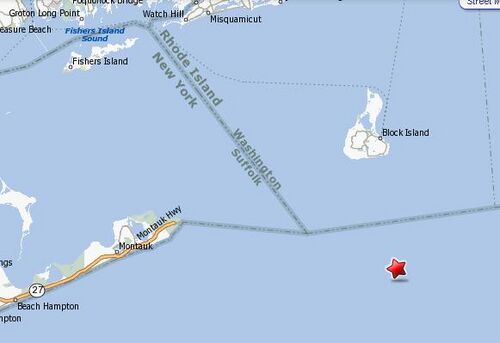
Screen capture by Ric Hedman
Page created by:
Ric Hedman & David Johnston
1999 - 2023 - PigBoats.COM©
Mountlake Terrace, WA, Norfolk, VA
webmaster at pigboats dot com





